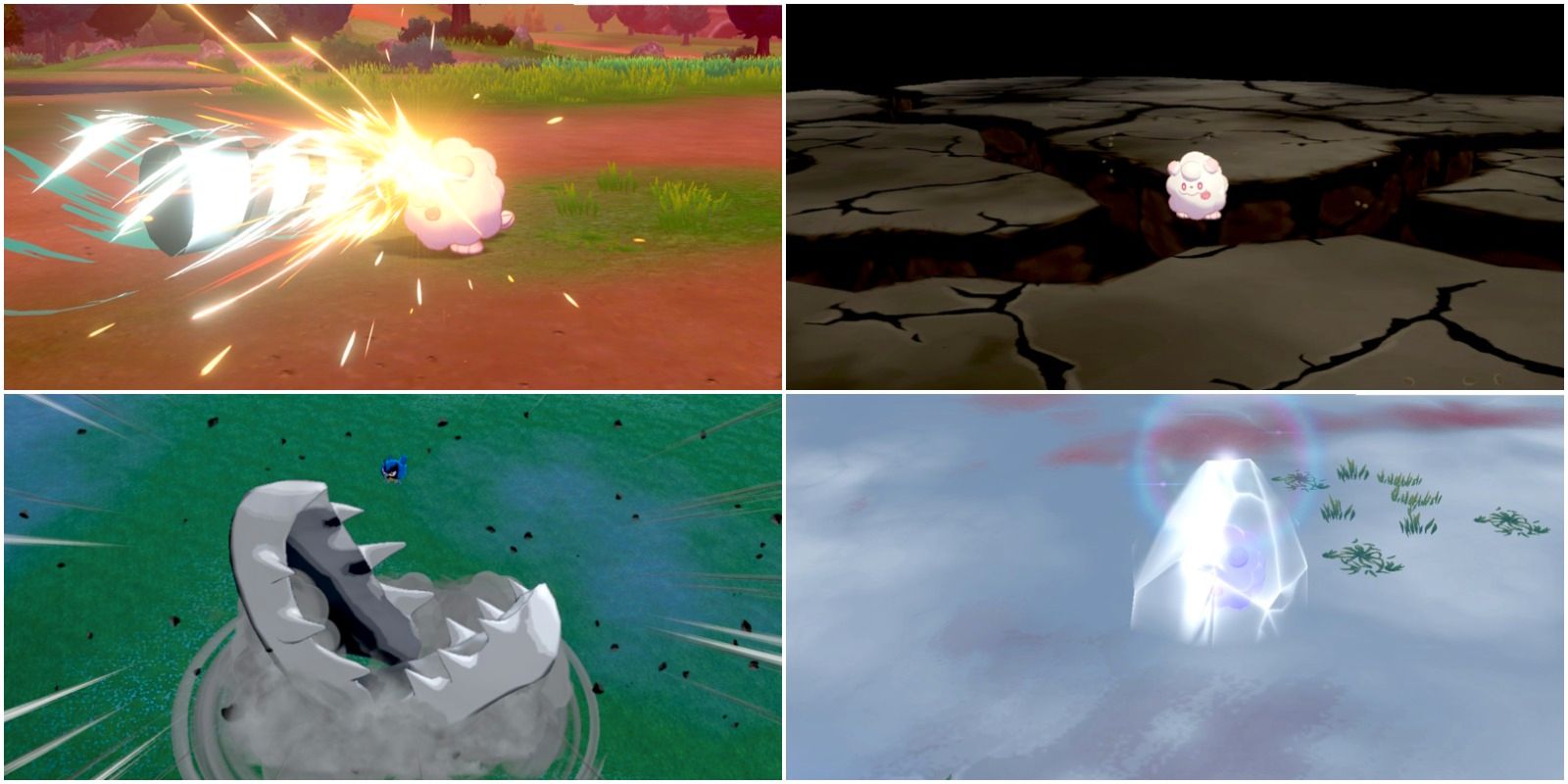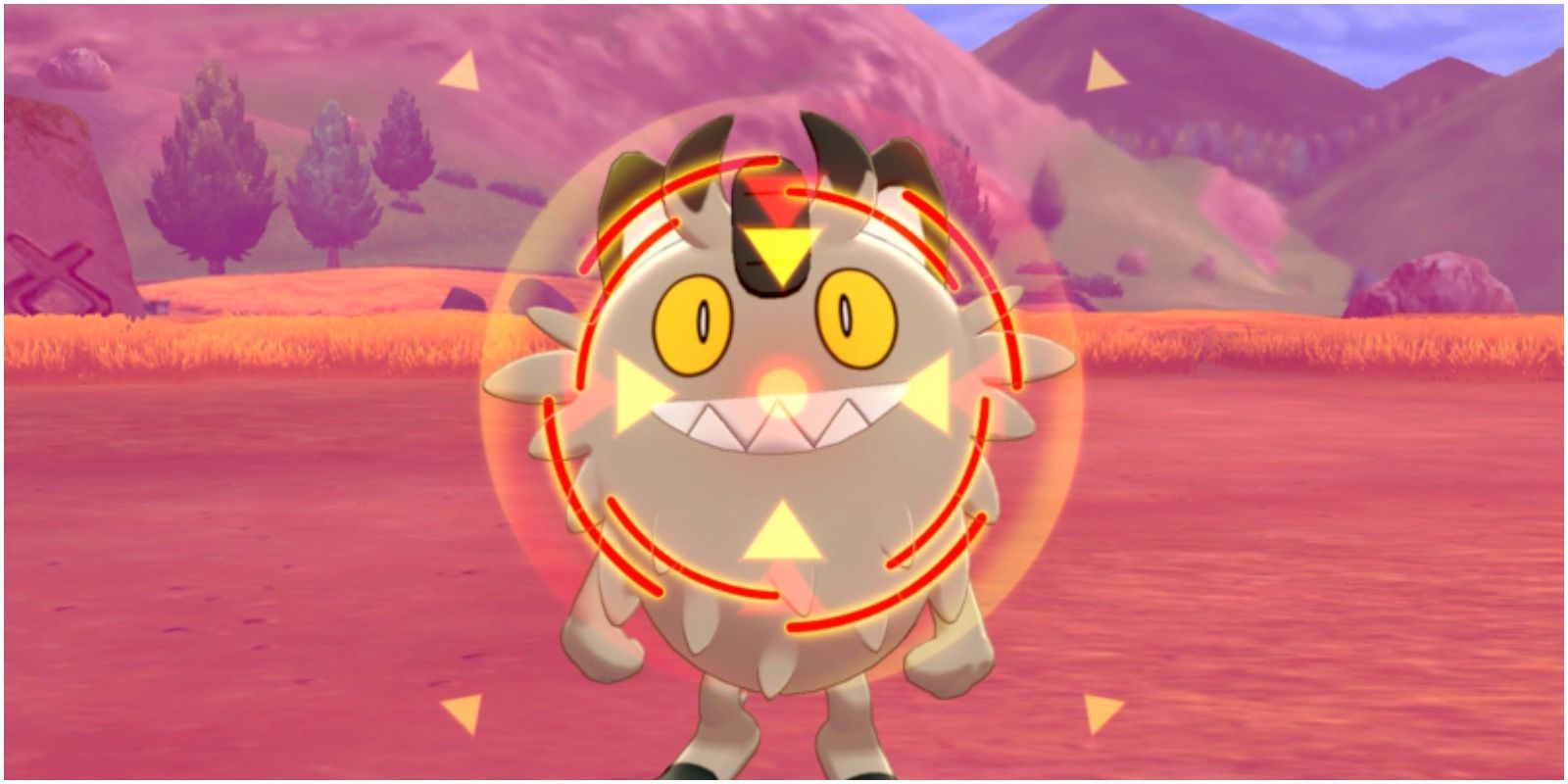Quick Links
- Every One-Hit KO Move In Generation 8 Pokemon Games & What They Do
- The Accuracy Mechanics That Govern One-Hit KO Moves
Being able to instantly knock out an opponent is understandably an overpowered ability, however, thankfully, there are limiting factors that prevent usage of One-Hit KO moves from becoming too widely used in the Pokemon franchise's games.
RELATED: Pokemon Sword & Shield: The Strongest Poison Pokemon, Ranked
In newer games, such as Pokemon Sword & Shield, things have been balanced so that the mighty One-Hit KO moves cannot be abused, but, in the earliest generations of the franchise's main series games, things weren't quite so refined. To best make use of these 4 strongest moves in the Pokemon Sword & Shield, be sure to learn the finer details of how they work in battle before trying to use them on an opponent.
Every One-Hit KO Move In Generation 8 Pokemon Games & What They Do

Horn Drill
Horn Drill is a Physical Normal-type One-Hit KO move that was introduced in Generation 1 and possesses a base accuracy stat of 30%. Usually, only pokemon with actual horns or similar body parts can use this deadly attack.
Fissure
By shaking the terrain furiously, pokemon can use Fissure to devastate enemies, which is a Physical Ground-type move also introduced in Generation 1. Also like Horn Drill, Fissure possesses a base accuracy stat of 30%, meaning that it will be equally tough to hit foes with during battle.
Guillotine
Pokemon with huge claws, jaws, or other sharp implements can bifurcate opponents by unleashing the Physical Normal-type move Guillotine, which possesses a base accuracy stat of 30%, just like the aforementioned One-Hit KO moves. Guillotine was also introduced in Generation 1, and its usage essentially mirrors that of Horn Drill, being of the same type.
Sheer Cold
Easily the most different out of all the One-Hit KO moves, Sheer Cold is a Special Ice-type attack with a base accuracy stat of 20% when used by anything other than an Ice-type pokemon, however, when used by an Ice-type pocket monster, its base accuracy becomes 30%. Sheel Cold was introduced into the Pokemon universe in Generation 3, where it made going up against some frigid foes a potentially frightening ordeal.
RELATED: Pokemon: The Strongest Ice-Type Moves of Each Generation, Ranked
How One-Hit KO Moves Work In Detail
One-Hit KO moves do not cause targets to instantly faint, as some assume, and actually function like regular damage-dealing moves that simply always drain the opponent's HP bar by the specific amount of remaining hit points.
For example, an enemy with 123 HP remaining that is hit by a One-Hit KO move will always lose exactly 123 HP, as opposed to being struck by a different kind of mighty move that could do more but only register 123 due to that being the max number of hit points that the target can lose.
The Accuracy Mechanics That Govern One-Hit KO Moves

The main factor restricting One-Hit KO moves is accuracy and the unique accuracy modifiers that have been implemented for these powerhouse moves over the years. However, things have changed quite a lot since Generation 1, with the earliest history of the main series games constantly shifting how One-Hit KO moves work. Thankfully, in Generation 3, the developers mostly settled on the mechanics currently used in the Pokemon games, though the history can be interesting to look back on.
One-Hit KO Move Accuracy Mechanics In Generation 1
All One-Hit KO moves in this generation have a base accuracy of 30% and can be influenced by status moves that raise accuracy or evasion in battle. However, when used against a target with a higher Speed stat than the user, a One-Hit KO move will always fail. Interestingly, a great tactic to abuse is to use an X Accuracy item, which will guarantee that the next move used will hit its mark.
One-Hit KO Move Accuracy Mechanics In Generation 2
One-Hit KO moves now have a slightly different base accuracy of 29.6% (represented by in-game text as 30%), though now have their base accuracy raised by 0.8% for every level that the user is above the target. For example, Horn Drill used by a level 51 Nidoking on a level 50 Blastoise will have a base accuracy of 30.4%. As such, this can get to the point where over-leveled users can strike more often with a One-Hit KO move than with powerful alternatives like Thunder or Blizzard. At the more ridiculous point, a pokemon that is 90 levels above its opponent will have a 100% chance to hit with a One-Hit KO move. Conversely, a One-Hit KO move used on a target that is a higher level than the user will always fail.
The mechanics tied to the Speed stats of pokemon from Generation 1 has been completely removed at this point in favor of the above mechanic that rewards training over naturally high Speed. However, One-Hit KO moves can still be influenced by status moves that manipulate accuracy and evasion in battle as well as by using X Accuracy to get a guaranteed hit.
One-Hit KO Move Accuracy Mechanics In Generation 3
Generation 3 saw refining of the One-Hit KO mechanics to a point where they were mostly suitable. Keeping the majority of the changes made in Generation 2, the developers simply smoothed out the equation so that all One-Hit KO moves now have a flat 30% base accuracy that will get boosted by 1% for each level the user is over their target. Additionally, One-Hit KO moves used on targets that are a higher level than the user will still fail, preventing possible overuse by trainers.
One-Hit KO moves now completely ignore modifiers to accuracy and evasion from status moves, items, and abilities (except No Guard). However, status moves that guarantee a hit on the next turn, specifically Lock-On and Mind Reader, can still be used to effectively land a guaranteed hit with a One-Hit KO move.
One-Hit KO Move Accuracy Mechanics In Generation 7 To The Present
In a minute and very specific change, Sheer Cold had its base accuracy dropped to 20% for all non-Ice-type pokemon that use it while remaining at a base 30% for Ice-type pocket monsters. Everything else, including the level-based accuracy modifier, remains in place.

